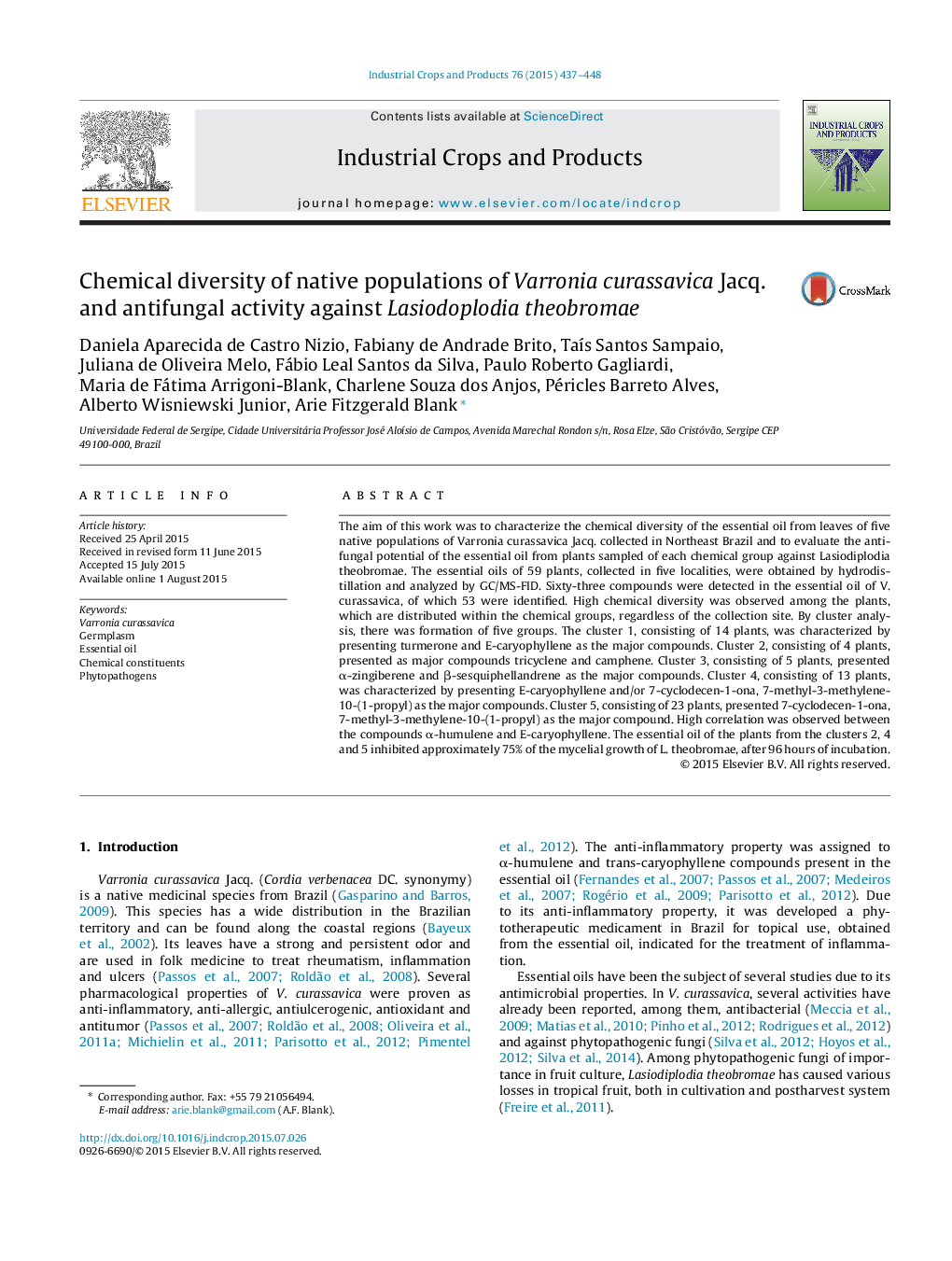| Article ID | Journal | Published Year | Pages | File Type |
|---|---|---|---|---|
| 6375585 | Industrial Crops and Products | 2015 | 12 Pages |
Abstract
The aim of this work was to characterize the chemical diversity of the essential oil from leaves of five native populations of Varronia curassavica Jacq. collected in Northeast Brazil and to evaluate the antifungal potential of the essential oil from plants sampled of each chemical group against Lasiodiplodia theobromae. The essential oils of 59 plants, collected in five localities, were obtained by hydrodistillation and analyzed by GC/MS-FID. Sixty-three compounds were detected in the essential oil of V. curassavica, of which 53 were identified. High chemical diversity was observed among the plants, which are distributed within the chemical groups, regardless of the collection site. By cluster analysis, there was formation of five groups. The cluster 1, consisting of 14 plants, was characterized by presenting turmerone and E-caryophyllene as the major compounds. Cluster 2, consisting of 4 plants, presented as major compounds tricyclene and camphene. Cluster 3, consisting of 5 plants, presented α-zingiberene and β-sesquiphellandrene as the major compounds. Cluster 4, consisting of 13 plants, was characterized by presenting E-caryophyllene and/or 7-cyclodecen-1-ona, 7-methyl-3-methylene-10-(1-propyl) as the major compounds. Cluster 5, consisting of 23 plants, presented 7-cyclodecen-1-ona, 7-methyl-3-methylene-10-(1-propyl) as the major compound. High correlation was observed between the compounds α-humulene and E-caryophyllene. The essential oil of the plants from the clusters 2, 4 and 5 inhibited approximately 75% of the mycelial growth of L. theobromae, after 96 hours of incubation.
Related Topics
Life Sciences
Agricultural and Biological Sciences
Agronomy and Crop Science
Authors
Daniela Aparecida de Castro Nizio, Fabiany de Andrade Brito, TaÃs Santos Sampaio, Juliana de Oliveira Melo, Fábio Leal Santos da Silva, Paulo Roberto Gagliardi, Maria de Fátima Arrigoni-Blank, Charlene Souza dos Anjos, Péricles Barreto Alves,
